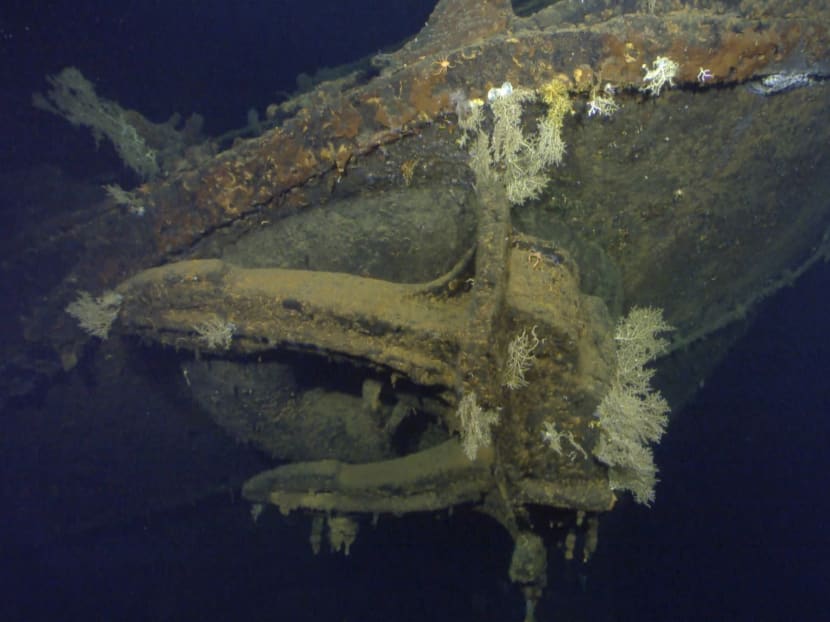Damage indicates underwater blast on Japan WWII battleship
TOKYO — Debris scattered over a large area at the bottom of the sea in the Philippines indicate that the massive Japanese World War II battleship Musashi was blown up into pieces in an undersea explosion 70 years ago.

One of two 15-ton anchors on the sunken Japanese warship Musashi, one of the largest battleships ever built, is seen in an undated handout image from a team led by Microsoft co-founder Paul Allen off the coast of the Philippines in the Sibuyan Sea, March 4, 2015. Photo: Reuters
TOKYO — Debris scattered over a large area at the bottom of the sea in the Philippines indicate that the massive Japanese World War II battleship Musashi was blown up into pieces in an undersea explosion 70 years ago.
Experts from a research team analysing a live feed from an unmanned underwater probe today (March 13) said they believe the Musashi suffered at least one explosion while descending in the 1,000m-deep sea. Except for an initial series of partial photos and images of the ship, today’s more than two-and-a-half hour feed was the first detailed images showing the current status of the ship.
The Musashi sank in October 1944 in the Sibuyan Sea during the battle of Leyte, losing half of its 2,400 crew. It was last seen disappearing into the water in one piece.
“The wreck is actually very damaged,” said marine scientise David Mearns, who was on the Musashi research team. “It appears she suffered at least one, if not two, magazine explosions which would have sheered off the bow and the stern, and its entire middle section of its super-structure.”
The footage showed sections of the ship that used to be an air-combat platform. The debris scattered in areas approximately 800m by 500m, according to the research team.
The feed also showed holes in the bow area, apparently made by US torpedo attacks before the Musashi sank, a torn off propeller, as well as gun turrets and catapults that were broken off. The ship’s stern as upside down.
The research team, sponsored by Microsoft co-founder and entrepreneur Paul Allen, was the first to successfully locate the ship, just ahead of the 70th anniversary of the war’s end later this year. AP






